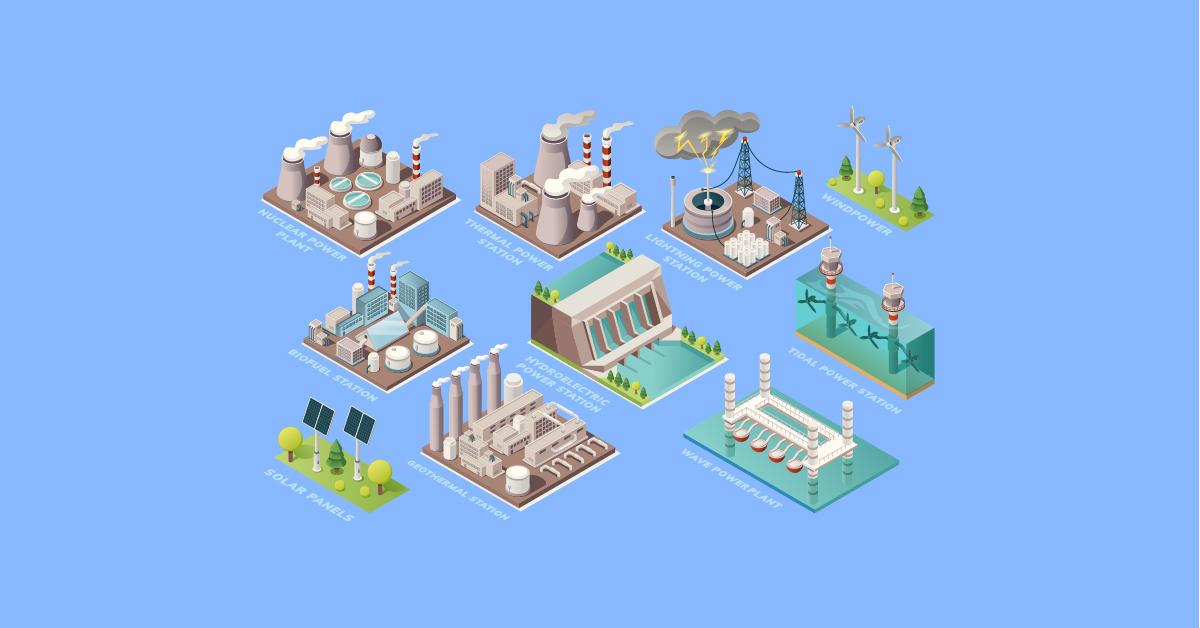Blast Resistant Buildings | Hazard Protection | Renewable Energy
Renewable Energy Trends in 2023


Renewable energy sources help cut carbon emissions, lower energy costs, and mitigate some of the risks of climate change. Still, the cost of developing new infrastructure for renewable energy can be high since it requires a significant up-front investment in the face of lower fossil fuel prices. But now that countries and investors understand more about the long-term payoffs, the renewable energy business is growing worldwide.
In 2020, the public and private sectors invested over $300 billion in renewable energy. Those investments will have to triple in order to meet new net-zero emission targets by 2050. With the International Energy Agency announcing that 2022 spending on renewables has exceeded the $440 billion invested in 2021, it's clear that construction projects are ramping up rapidly.
In light of recent renewable energy trends, RedGuard has risen to meet the needs of organizations building new facilities and retrofitting old ones in preparation for the future.
New Technology & Ultra Protection
Artificial Intelligence
With the new construction of renewable energy plants (and updated infrastructure like microgrids, wind farms, and solar panels) comes new technology for managing them efficiently. Energy producers are increasingly utilizing artificial intelligence (AI) solutions for a host of tasks on worksites, including:
- Managing decentralized energy grids.
- Balancing the supply and demand of electricity needs in real-time without collapsing grids.
- Optimizing energy usage and storage.
As new businesses produce their own energy, storing it or feeding it into the grid can be a significant challenge. According to the World Economic Forum, "approximately 36 million assets such as solar panels, electric vehicles, and energy storage will be added to the grid in Europe in 2025, and 89 million by 2030. Millions of individual devices uploading and downloading electricity could create chaos for electric grids."
It's unlikely that tasks that are this complex can be handled with human labor and legacy business models and will require the use of AI software to deploy power when and where it's needed.
Blast Resistant Buildings
RedGuard's blast resistant buildings are blast tested, modular, and customizable and have a long track record of saving lives and livelihoods when accidents occur on worksites of all kinds. And because our modules are constructed off-site, renewable energy facilities reduce their risk of worker accidents, injuries, and work stoppage. RedGuard even offers specialty buildings that can be used as safe spaces for control rooms, offices, laboratories, and other technical buildings.
Energy Storage Enclosures
Energy storage enclosures serve as essential components for renewable energy facilities by providing housing for various equipment required for their operation and maintenance. Such enclosures can accommodate a range of equipment, including control panels, battery systems, inverters, and transformers.
Some Countries Have Become Reliant on Renewable Energy
Despite infrastructure and financial challenges, some countries aim to become 100% reliant on renewable energy sources. Many more promise to reach this goal in the next 10 to 20 years.
Below are some countries that have taken the lead in utilizing renewable energy sources:
- In its quest to be the first fossil fuel-free country in the world, Sweden currently generates 75% of its electricity from hydroelectric (45%) and nuclear (30%) power. Wind power contributes to 17% of their energy production.
- Costa Rica gets more than 98% of its electricity from hydro, geothermal, solar, and wind.
- In Nicaragua, renewable energy sources account for 75.2% of electricity production, with the most significant contributor being geothermal.
- Scotland has used wind power for 98% of its energy output.
- In Uruguay, 97% of the country was already powered by green sources by 2018.
- Iceland started its transition to renewable energy decades ago and runs on 85% renewable energy from hydropower, geothermal, and wind power today.
- Germany, Denmark, and Morocco are also making great strides in using renewable energy sources.
Oil Companies Are Utilizing Green Hydrogen
Big oil companies (including the likes of Shell, BP, and Exxon) are also "going green" by looking toward green hydrogen (H2). This is partly because they have the funds and infrastructure to pivot away from fossil fuels as they become less popular worldwide. In fact, BP purchased a 40.5% stake in an Australian renewable energy project which could become one of the largest green H2 producers in the world.
In many ways, the hands of oil companies are being forced to produce a clean form of hydrogen made with renewable energy. The cost is high, but being late to the party may end up being even more expensive. And while the cost of transitioning has been considered too high in the past, the falling costs of renewable energy production and the rising cost of natural gas make it climate-friendly and good business.
Companies Are Setting Net-Zero Targets
Of the roughly 2000 largest publicly-traded companies in the world, over one-third set net-zero targets in 2022 (up from one-fifth at the end of 2020). In that same period, the percentage of nations that have set net-zero targets in their legislation has surged from 10% to 65%. In the U.S., the global management and consulting firm, McKinsey & Company, reports that around 400 large companies have also committed to net-zero targets and emissions reduction targets for 2030 or sooner.
While there has been a rush to make promises, there is still a disconnect between announcing plans and creating viable action steps. The next few years are crucial for companies to start planning to meet their goals and find more renewable energy sources. As they do, the construction of renewable energy facilities will grow exponentially.
Committing to a Greener Future
We're headed for a greener future for economic and environmental reasons. We have the technology to create and disseminate renewable energy for today's purposes. Still, with companies and countries set to ramp up their promises and plans to commit to renewable energy sources, we'll likely see a boost in the growth of new facilities.
Even with money and time on our side, creating these renewable energy facilities and distributing their products comes with safety risks. Being able to protect people and secure equipment is paramount. In 2023 and beyond, we're prepared to see a rapid increase in the number of blast resistant buildings and other specialty modular buildings needed on these new worksites. That's why RedGuard is already preparing to rise to the occasion with a suite of ultra-protective modular buildings to protect our green future.
RedGuard Sales & Marketing
The RedGuard sales and marketing team curates and writes on a variety of topics regarding blast-resistance and modular buildings. To inquire about any of the topics you read about on our blog, connect with us.

